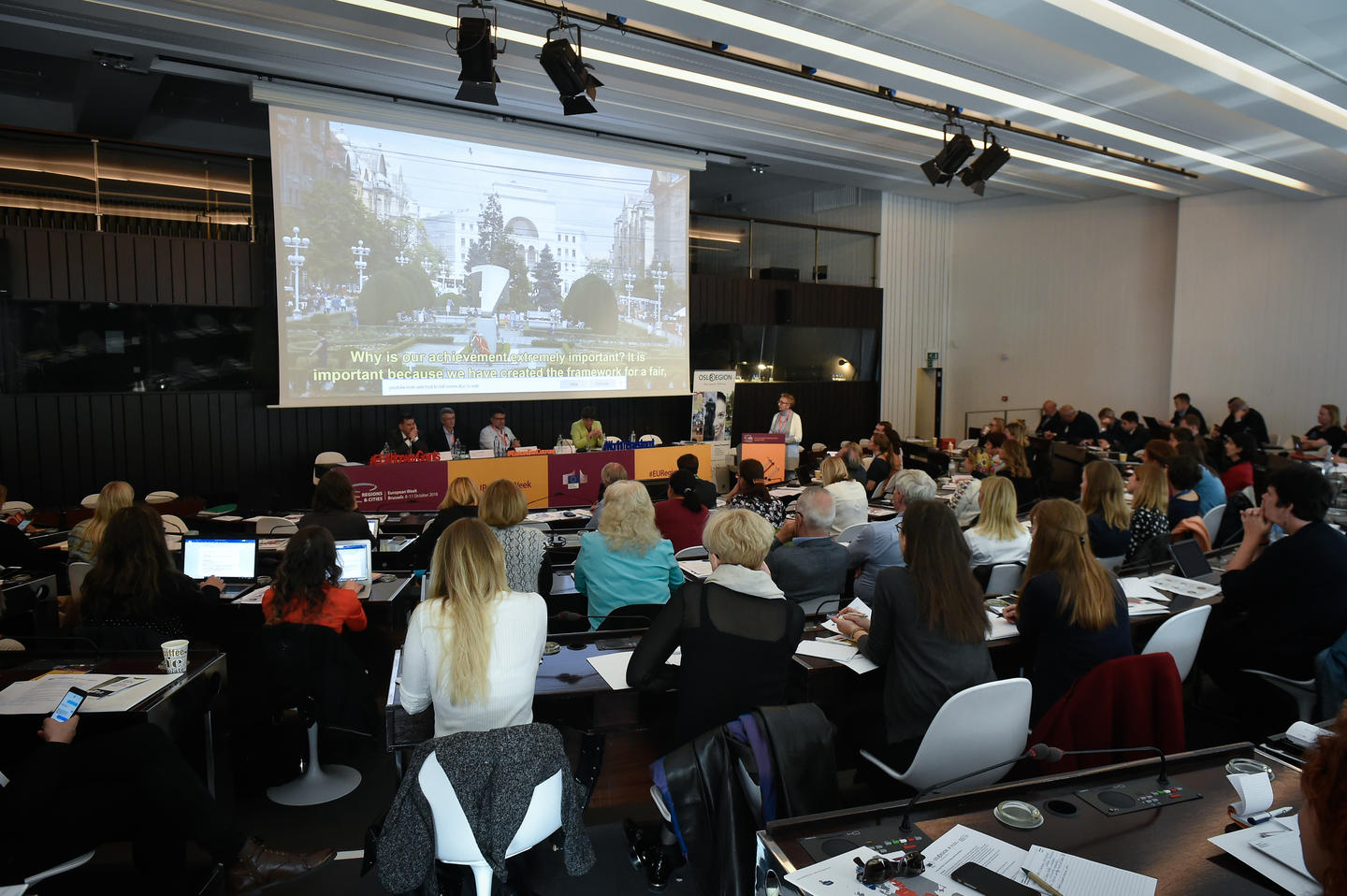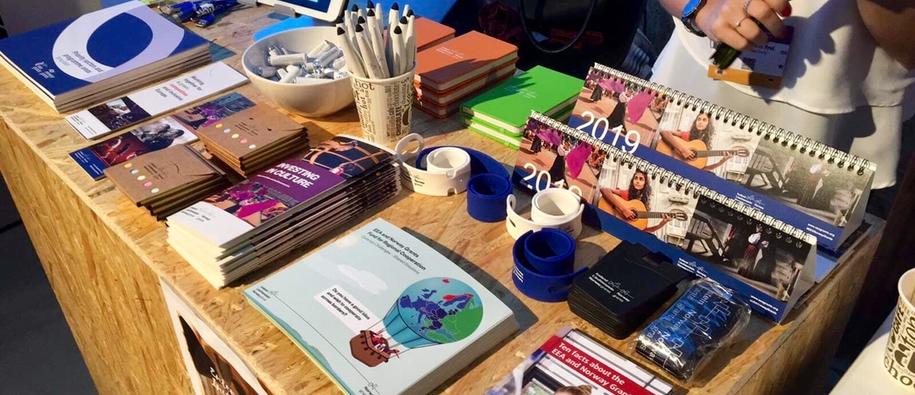The EEA and Norway Grants were well represented during the European Week of Regions and Cities 2018, held in Brussels on 8-11 October, which mobilised 6,000 participants from all over Europe and beyond. This is a key event in the EU calendar, gathering policy makers and regional players to discuss issues across numerous sectors in workshops, side events, and an exhibition.
Cultural heritage: worth the investment?
The workshop “Cultural heritage: worth the investment?” was co-organised by the European Commission, Oslo Regional Office, the Mission of Norway to the EU, and the EEA and Norway Grants. It featured several best practice examples from the EEA and Norway Grants and the European Union Regional Development Fund – Interreg on how investing in cultural heritage can benefit local communities and cooperation across borders.
The project ‘Poles of Culture’, a collaboration between Romania and Serbia, showed how two regions with common challenges can capitalise on shared cultural heritage as an engine for interregional and cross border development. Through cross border cooperation, an old cinema was transformed into a youth club and public debates on the role of cultural heritage and reurbanisation were organised. Although the economic investment was relatively small, the impact at the local level was enormous. The project also helped Timisoara and Novi Sad’s successful application to become the shared European Capital of Culture in 2021.
The Slovak-Norwegian project ‘Pro Monumenta’, funded by the EEA and Norway Grants, focused on preventive maintenance of cultural monuments in Slovakia following a model first developed in the Netherlands. It helped change the mindset regarding the importance of early preventive measures to maintain the quality of cultural heritage sites and objects. The project provided training and equipped mobile teams that ensured the health and maintenance of precious sites across Slovakia.
‘Second Chance’, a project with ten partners from five central European cities (Interreg Central Europe programme), aimed at finding a common approach to the structural changes that have occurred in Europe with the shift from industrial-based economies to the post-industrial, service-based societies. The project put in common lessons that other European cities could also use to transform post-industrial sites into spaces for cultural and creative activities in urban districts. These pilot projects gave a “second chance” to sites in the cities involved, resulting in follow-up investments afterwards. The project showcased the success of public-private partnerships in transforming economic support into social impact.
Finally, through the EEA and Norway Grants, a prestigious farm in the Hå municipality in Norway collaborated with the Suuremõisa manor in Estonia to restore and maintain the Oberstad Lighthouse in Norway as well as to reuse the Suuremõisa manor as a cultural attraction. Both partners received invaluable exchanges from each other, resulting in lasting Erasmus+ collaborations. Students from the vocational school operating in the Suuremõisa manor carried out part of the restoration works of the lighthouse. The workshop highlighted the role of culture in benefitting society, as “it is [about] more than just preserving old buildings and monuments; it has real impact for people”.
The EEA and Norway Grants support EU cohesion policy in making Europe stronger
This year, the EEA and Norway Grants were present at a stand during four consecutive days (8-11 October), informing the participants of the EU Regions Week about potential funding opportunities and complementarities with the EU’s instruments. Indeed, the Grants and EU funds are complementary, as they can support each other – for example – by helping a pilot project to grow or by funding different aspects of the same project.[1] The Grants can also finance projects where EU or national funding is difficult to find, avoiding duplication.
The main highlight of the stand was a digital exhibition video that was displayed during the week and showcased key project examples on the EU and the EEA’s support to cultural heritage. Various other activities were organized to inform about the next funding mechanism and future calls. For instance, visitors could ‘date’ a funding expert and get inside knowledge on our actions in different topics, ranging all the way from justice and home affairs, to education, research or innovation. All in all, the stand was highly visible towards the EU institutions and Brussels-based actors, directly interacting and engaging with them such as the first vice-President of the Committee of the Regions, Markku Markkula, who made his own ‘EEA and Norway Grants badge’ at the stand.
The EU Regions Week 2018 was officially closed on Thursday afternoon by Corina Crețu, Commissioner for regional policy; Karl-Heinz Lambertz, President of the European Committee of the Regions; and guest speaker Anthony Gardner, former U.S. Ambassador to the European Union.
[1] “EEA and Norway Grants support EU Cohesion Policy in making Europe stronger”, p. 54, Panorama no. 64, spring 2018, European Commission, in http://ec.europa.eu/regional_policy/sources/docgener/panorama/pdf/mag64/mag64_en.pdf
Find more information about the European Week of Regions and Cities
Sign, support and share the Berlin Call to Action "Cultural Heritage for the Future of Europe"

